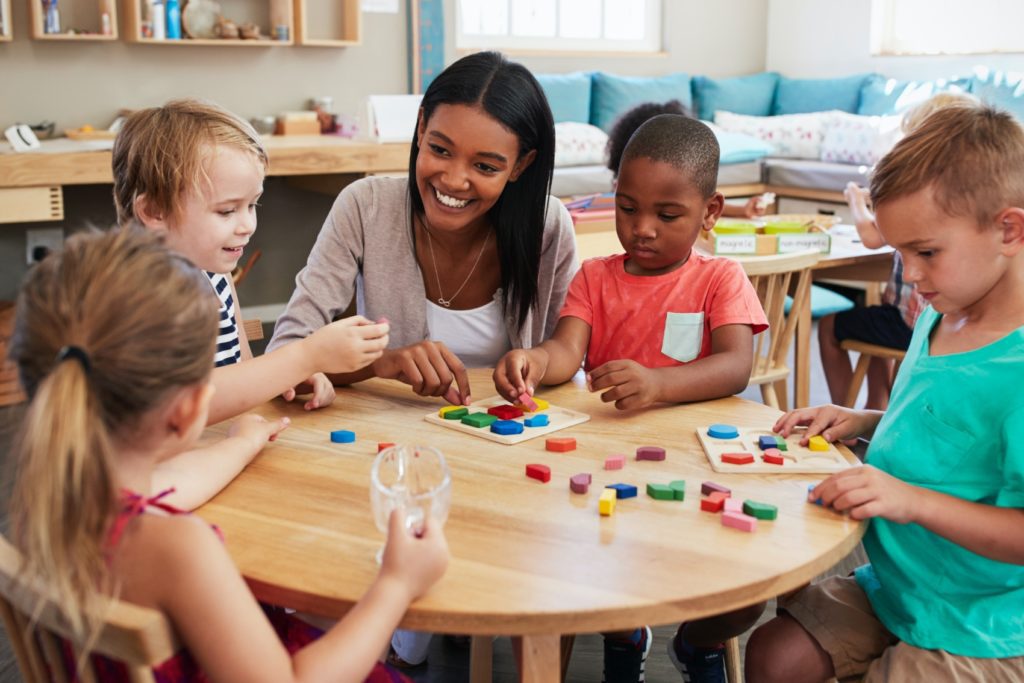Individualizing to Include All Children


“Fair isn’t everybody getting the same thing. Fair is everybody getting what they need in order to be successful.”
For teachers, each school year is full of surprises and excitement. When I transferred to a new school in my sixth year of teaching, I was armed with a head full of theory and lots of classroom experience. I naïvely thought I was ready for anything. Then I received the following news: “On Thursdays, the children from the emotionally disturbed class will join your group.”
Over the years, I’d had many opportunities to teach and care for children with a variety of special needs. Each experience brought a new chance for me to learn and grow as a teacher. I admit that the prospect of working with a group of children who had an “emotionally disturbed” diagnosis did concern me, despite my experience and positive intentions. I wasn’t sure what to expect. The first day with the children was a little awkward for me, as I was busy trying to make sure I did and said the “right” thing to keep everyone engaged and content. I quickly realized that these children were just like all the other children I worked with: unique individuals. Rather than focusing on their diagnosis, I should have been focusing on their interests and abilities. The lightbulb went off. I’d let the diagnosis distract me from treating these children as I would any other group of children.
Regardless of each child’s Individual Family Service Plan (IFSP) or Individualized Education Program (IEP) which require teachers to make accommodations to support a child’s individual strengths and needs, my critical task was getting to know each child. Another lightbulb went off when I realized that all children deserve this type of individualization. As I focused on learning about each child’s strengths, needs, and interests, I noticed all sorts of changes: better relationships with each child; fewer behavior issues; more time engaged in rich conversations and; of course, improved child outcomes. This was true for all of the children in my classroom.
It is this type of responsiveness that all children need in order to develop and learn in a safe and encouraging environment. When getting to know children well, consider their individual differences in these areas.
- Gender: Note how gender influences children’s behavior and your own expectations. Help children understand that your classroom is a place to explore freely.
- Temperament: Note each child’s behavior in a variety of settings and throughout the day. How do children respond to their environment? Understanding how children are likely to react to people and events helps you be a more responsive and effective teacher.
- Interests: Make it a practice to nurture children’s interests. This conveys the message that you value what is important to them and helps them gain new skills and confidence.
- Learning Styles: Take all styles of learning (auditory, visual, and kinesthetic) into account by offering learning opportunities in each style. Consider whether you tend to provide learning experiences primarily in your own preferred learning style.
- Life Experiences: How much do you know about the life circumstances of the children in your group? Developing respectful relationships with families encourages them to share meaningful details that might affect a child’s behavior and ability to learn.
- Culture: Talk to families about their own unique child-rearing practices and beliefs to avoid assigning cultural labels based on ethnic, racial, and religious identification. Consider each family’s beliefs, values, and practices and how they might influence how the child thinks and interacts with others.
- Multilingual Learners: Research confirms the importance of supporting children’s continued learning in their primary language while at the same time fostering their ability to learn to speak English. As much as possible, provide rich experiences in the child’s first language in addition to English.
- Advanced Learners: Provide challenging and stimulating experiences to avoid boredom and frustration. Remember that a child who is advanced in one area is not necessarily advanced in all areas, so it is important to pay attention to her individual needs.
- Children With Disabilities: Remember that the ultimate goal for children with disabilities is the same as for children without disabilities—to give them full access to the curriculum and to help them develop and learn as much as possible.
The most important thing to remember when working with children with special needs is to observe each child, follow his or her lead, and then create an environment where every child feels supported and challenged. All children benefit when their teachers pay attention to their individual strengths and needs. With this in mind, I’ll close with one of my favorite quotes from Ignacio Estrada:
“If a child can’t learn the way we teach, maybe we should teach the way they learn.”
